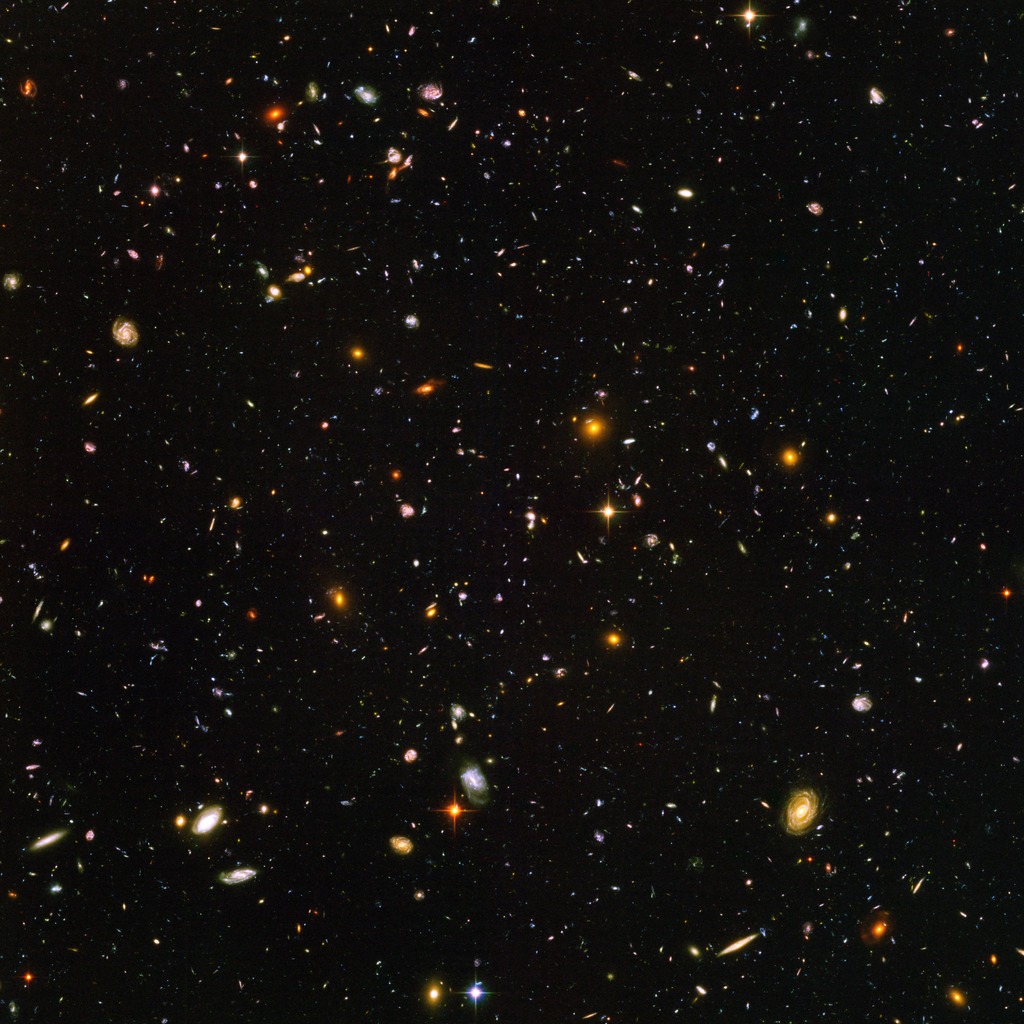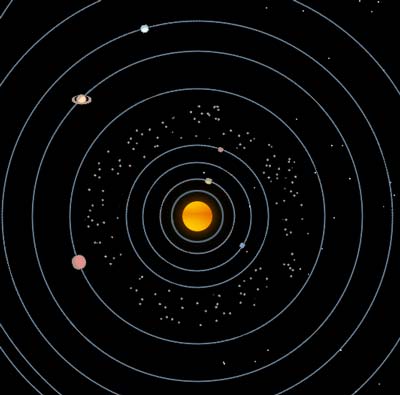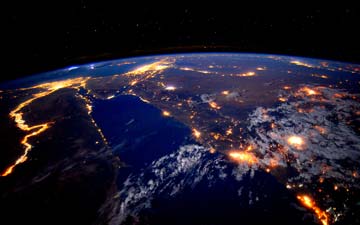Ask the Astronomer
Have an astronomy question?
Before asking your astronomy question, please search our archives. Type your question in the search box below.
If you don't find your astronomy question answered there, you can ask a priority question, which will ensure an answer.
To ask a priority astronomy question, click here.
To ask a non-priority astronomy question, click here. Please remember you may not receive an answer. If a prompt answer is important to you, then ask a priority question by clicking here.
Recently Asked Questions
How many galaxies do we know of; how large are they and what is their distance from our galaxy?
How can I find out what stars/nebulae are located at 35,000 light-years from Earth?
What evidence is there for the Big Bang?
Did the Big Bang occur in complete nothingness or did something trigger the Big Bang's explosion?
What does it mean when a star falls in front of you? And why are weathermen called meteorologists?
What is the best time of year to look for comets? Could a comet hit the Earth?
If I made an astronomical discovery who would I report it to?
What is a good "first telescope" for me and my family?
In the movie CONTACT, humans decoded a message from extraterrestrials. In real life how could scientists send a message and receive an answer from extraterrestrials?
Over the years I have heard about various planetary alignments. Are these alignments real?
What do worm holes and curved space have in common and how are they different?
Can you please tell me who proved the earth is round?
I am trying to find out where exactly the Very Large Array is, but all I can come up with is that it is near Socorro New Mexico. Do you Know where it is exactly?
The popular big bang theory states that the universe does not expand into space; rather space itself expands, 'dragging' stars etc. with it. For the recessional velocities of other stellar bodies to be observable, requires that space be expanding only between the stellar bodies. If space were truly expanding evenly at all points (including within atomic structures) we would not detect any relative expansion (like enlarging a photo). I have heard it said that whilst space expands, the gravitational and nuclear binding forces have remained constant, thus allowing the observation of expansion. But this is most unsatisfactory because those constants are actually defined by spatial dimensions. For the gravitational constant to have remained unchanged would mean spatial dimensions have remained constant also. This is in conflict with a theory of expanding space and would render the concept of space an undefinable, unscientific abstraction.
Suppose we can detect light from the most distant objects 14 billion light years away. The radius of the observable universe is then 14 billion years and the age of the furthermost objects is 14 billion years. But 14 billion years ago, the universe was much smaller and probably closer to a singularity. So how is it that the closer an object's distance from us approaches 14-15 billion light years, the closer it is to being a singularity. Surely that entails a violation of the limit of the speed of light for the recessional velocities.
Other questions recently posed
Karine Jans asks:
I know a lot about space, so I can ask only 2 questions: how far is it from Earth? The current image that can be seen, is an image that dates far back in time. So, how "old" is that representation?
Astronomer Bill replies:
I assume you are asking about the edge of the visible universe how far away it is from Earth and how old it is. I assume by "current image" you mean the deep field images taken by the Hubble Telescope.

The Hubble Telescope is named after Edwin Hubble who determined that from the point of view of Earth (and probably from any other point in the Universe) the Universe is expanding as most galaxies are receding from the earth as evidenced by the red-shift in their spectrum - the Doppler Shift of recessional velocities. Even more dystopian, recently astronomers have determined that these recessional velocities are increasing as we look farther out, suggesting that the Universe will constantly expand until it runs down like a clock spring unwinding until there is no energy left.
The good news is that theories about the origins of the Universe change as new data is discovered and our Earth & own parent star the Sun will die much sooner than the billions of years it will take for entropy to be the Universe's chief feature.
The age of Hubble Deep Space images average a little over 13 billion years with the overall age of the Universe estimated at 13.5 - 13.7 billion years. This means that the light from the Deep Space Hubble images took over 13 billion years to get here. From that info we can determine how far away from Earth these most distant visible galaxies are. Light travels approximately 5.8 trillion miles in a year so the distance from Earth to the visible edge of the universe is 5.8 trillion miles (or 9.5 trillion kilometers) X 13.6 billion.
Cameron Porter writes:
I do not accept the theory that everything in the universe is expanding away from everything else in the universe. If everything was doing this, everything would have to be equal distance from everything else....
Astronomer Bill replies:
Every single bit of matter is not expanding from every other bit. Obviously, our own solar system is held in place by the Sun. The Big Bang theory applies to the galactic scale of galaxies expanding from each other. And even then there are thousands of exceptions, where galaxies are colliding into each other and galaxies are in clusters and super clusters. Our own Milky Way is headed for a crash with the Andromeda Galaxy our sister galaxy in the Local Group of Galaxies in a scant 5 billion years.
Cameron Porter continues:
I respect Stephen Hawking very much, but I do not believe there was "nothing at all before the big bang". I believe that the universe is expanding from a central point (the location of the big bang), and to have a central point you have to have space before the event, center point.
Astronomer Bill:
The problem with the central point concept is that in mathematics a point is an imaginary position so small that it doesn't exist except to "define" a place from which to begin. This is why cosmologists prefer the word "singularity" which is defined as that from which reality begins or propagates.
The singularity concept means that you have to not only accept the notion that there was no before (that is no time), there was also no place (or no location) where the Universe began. That is why in discussions of the Big Bang, astronomers never talk about where the center of the Big Bang is or the location of the probable center of the Universe where it all began. This is impossible because the singularity has no location. It is "everywhere" and "nowhere".
The singularity does not require there be space before the event. If space does not exist at singularity then there can be no location for the singularity. Which is why I and others have said that both space and time were created by the singularity.
Now I know I am speaking paradoxically and despite the accuracy of my statements, I would like to share with you an even more fantastic model that may help make these concepts more comprehensible.
All of the above is a description of the 3-dimensional physical Universe in which we live and our 5 senses detect. What has not been taken into account is the possibility that the 3-D Universe was seeded by event impossible in 3-D terms. That is, another reality, say a 4-dimensional reality, created this Universe.
Just as mathematicians have no problems with points and singularities, so too, do they have no problem with dimensions outside of 3. In a 3-D cube, our physical Universe, everything is perpendicular (or 90 degrees) from everything else 3 ways-by length, width, and depth.
Mathematics and Geometry predicts that a 4-dimensional cube is one where reality is defined by everything being perpendicular 4 WAYS, length, width, depth, and something else. We can build 3-D distorted models of these 4-D cubes called hypercubes or tesserracts. Since in our reality 2 things can't occupy the same space, we can cannot perceive this 4th dimension, but we can apprehend it's existence through the following simple exercise:
Imagine that you are a 2-D person living in Flatland - there is length and width but no height or depth. The Flatland Universe extends infinitely through a plane of length and width. Flatland is actually the plane of your coffee table in your living room. Now you, Cameron, come along in your 3-D self and place a Coke can onto Flatland.
What will they see?
"Suddenly a circle appears!"
Now you pick the can up and drink from it.
"Suddenly the circle disappears!"
Now you set it down again on Flatland in a slightly different place.
"It's an act of God! The circle appears and disappears without any apparent form of locomotion!"
Other Flatlanders hear about this and throughout the entire Flatland Universe a religion starts around a God that makes circles come from nowhere with no warning and causes them to disappear just as quixotically. The Flatlanders worship you, Cameron, as their God waiting for your next act, even though you're just minding your own business drinking a Coke.
One day, the most brilliant of all Flatlanders, the equivalent of an Einstein or Hawkings, announces to all Sentient Beings in the Flatland Universe that the mysterious acts of God Cameron are not that mysterious. This Genius tells everyone that all they need to do to understand where they came from, how they were created, and what's going to happen is LOOK UP!!!!
Well, none believes him, because this is the first time in the history of Flatland that anyone has every suggested such a thing.
"You can't do that", they cry. "There is no UP or DOWN - there are only 2 dimensions, you can only have Length and Width. That's how it's been for BILLION OF YEARS since the beginning of Time!"
Well, the Genius doesn't take it back. In fact, he tells them that the "God" they've been worshipping is really just some guy named Cameron drinking a Coke. But he also deduces that Flatland arose from another dimension, a dimension that explains the mysterious circles and a bunch of other mysterious things like why it's dark and light, why it rains and sometimes is dry. Because the Genius can see clouds coming, he accurately predicts the rain. Because he can see the Sun, he predicts Night & Day.
Unfortunately, because he refuses to attribute these acts to the God Cameron, he is burned at the stake as a heretic, but that is not relevant to my illustration.
Shayne Perry asks:
Where does God live?
Astronomer Bill:
Since you asked a scientist about God, then I presume you are looking for a scientific answer, which I will try and give.
Reading the Flatland story above implies that perhaps God lives in a another dimension. And because that dimension is inconceivable and fantastic to us, it seems like the hand of God is penetrating our Universe or as the Catholic Church says in Latin: Ex Deus Machina.
Certainly the notion that the Universe was started by a 4-Dimensional person setting their 4-D Coke down on a 4-D coffee table trivializes the notion of God, but science has done this for centuries. I'm reminded of the Black Plague of Europe which the Church told it's parishioners was God's punishment for their sins. Science later proved that the Black Plague is a bacteria that can be eradicated with anti-biotics. A more humorous example is from Mark Twain's "A Connecticut Yankee in King Arthur's Court". Because the Yankee had his Farmer's Almanac he is able to predict a total eclipse of the Sun. King Arthur's Court is completely amazed and ascribes all kinds of supernatural and God-like powers to him.
Another insight from Science as to where God may live comes from the great German physicist Werner Heisenberg. The Heisenberg Uncertainty Principle states that the more carefully you try and observe something, the less likely you are to be sure of where it is.
In simple terms, Heisenberg's Principle suggests that the observer is just as important as what we are observing. Or the solution to the Big Questions of the Universe like "Where Does God Live?" lie more in the question and questioner than in simply going after the answer or solution. Werner Heisenberg might say that Reality exists as each person perceives and describes it. In that case, God lives in your mind, and where he lives in your mind is up to how you choose to describe God.
Asif Rehman asks:
I read a small article in a science magazine that some scientist had exceeded the speed of light. They had sent a micro wave through some plates and instead of slowing down, some particles moved faster that light. The speed they got was only a minor increase, but still, they broke the "light barrier". Have I been misled?? And thanks for the good site :-)
Astronomer Bill:
It is not possible to exceed the speed of Light in this 3-D world of physical reality. This is another question whose answer partially lies in the Flatland Allegory (see above).
Since particles accelerated to the speed of Light become pure energy, it is not possible to accelerate a particle past the speed of light since at the speed of light the particle is no longer a particle - it's pure Light!
"Tell that to Mr. Spock or Capt. Kirk!", you might reply. After all the concept of extra-light speed has been with us for most of the 20th century. If the velocity of Light is the absolute limit as Einstein claims, how does warp drive work? Well, we don't know - that's the attraction of science fiction. We haven't done it yet. But we can talk about it as a concept.
Just as a Coke can mysteriously moves through Flatland "without any apparent form of locomotion" so could a 4 dimensional drive system allow an object to remain intact (not turning into pure energy) while cutting through the fabric of space-time reality. Just as on Star Trek, a spaceship using a 4-D propulsion system would actually disappear from one part of space and reappear in another. From the three-dimensional observer's point-of-view, the space ship would have to be moving at much greater than light speed to get from "here" to "there". But the "Warp Drive" is actually allowing the ship to travel though another dimension perpendicular to the 3 dimensions we perceive, allowing space to be folded or "warped."
Let's go back to Flatland to understand this more easily. Image a 3 foot line on Flatland. The only way for a Flatlander to get from one side of the line to the other is to walk 3 feet. Now imagine our 3-D God Cameron from the aforementioned Flatland Story. He sees the poor Flatlander struggling with the long journey and picks up the line with the Flatlander on it. Since he has moved or "propelled" the Flatland line into 3-dimensions, the first thing that happens is the Flatlander appears to have disappeared, because Flatlanders can't look up.
Now our God Cameron has mercy on the Flatlander having to walk that far and simply bends (or warps) the line to where the beginning of the line is touching the end of line. From our 3-D perspective the space has been shortened and our Flatlander is now 3 ft. on the other end of the line. God Cameron places the line back onto Flatland and to all the other Flatlanders they witness a miracle of the fellow disappearing and then suddenly reappearing 3 ft. away faster than the speed of Light! The religious Flatlanders exclaim "Ex Deus Machina", while the scientists shake their heads and say it's impossible to travel past light speed. And the Flatland Psychics keep blaming the extra-terrestrials and their warp drive technologies for abducting Flatlanders.......but forgive me for digressing.
The Flatland example illustrates the fact that using other dimensions it is possible to travel distances and obtain apparent rates of speed that appear to exceed that of light. The reason the space ships on Star Trek stay intact is because they don't really accelerate past light speed, they simply take a short-cut ("warp-drive) and show up in another part of 3-D space that would require extra-light speed had they not taken the short-cut.
 See an animation of the movement of planets in our solar system.
See an animation of the movement of planets in our solar system. See amazing views from space
See amazing views from space